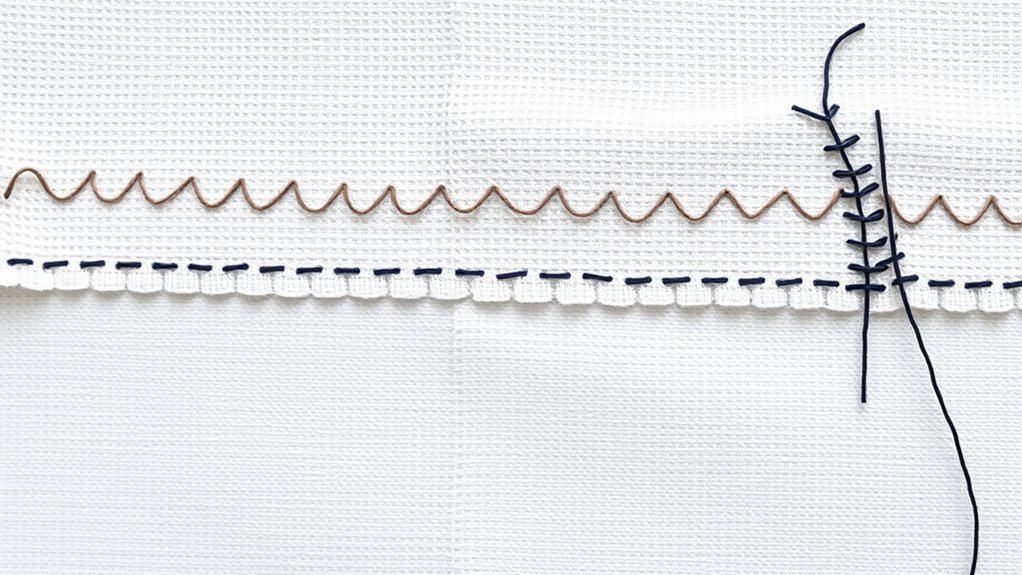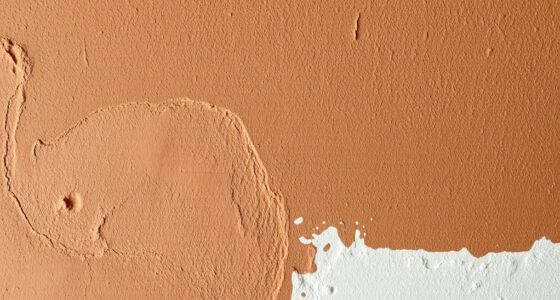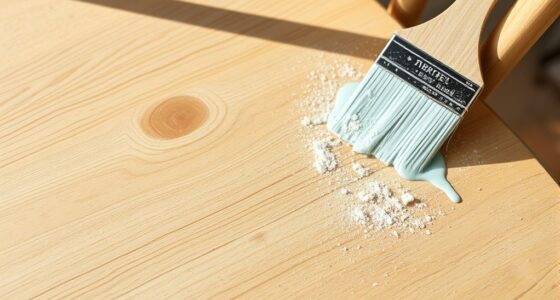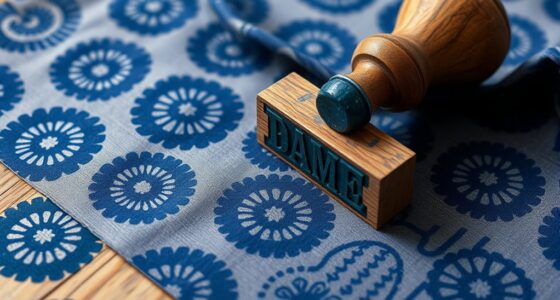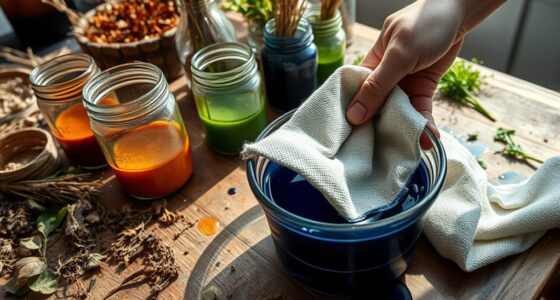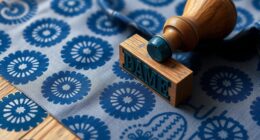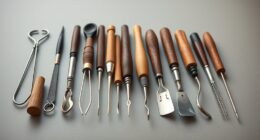To master basic sewing stitches everyone should know, start with the running stitch for quick repairs and basting, then learn the backstitch for strong seams in garments. The whipstitch is great for finishing edges and decorative touches, while the bobbin stitch adds secure, decorative accents. Understanding these stitches helps you create durable, neat projects. If you continue exploring, you’ll discover how to use each stitch effectively and improve your sewing skills even further.
Key Takeaways
- Running Stitch is the most basic, versatile stitch suitable for lightweight to heavy fabrics and foundational sewing projects.
- Backstitch provides a strong, durable seam ideal for tension-prone areas and long-lasting garments.
- Whipstitch is perfect for finishing raw edges and adding decorative details to fabric edges.
- Bobbin Stitch is used for secure, decorative, or functional machine embroidery and appliqué work.
- Understanding proper tension, needle, and thread selection is essential for achieving professional-looking, durable stitches.
Running Stitch
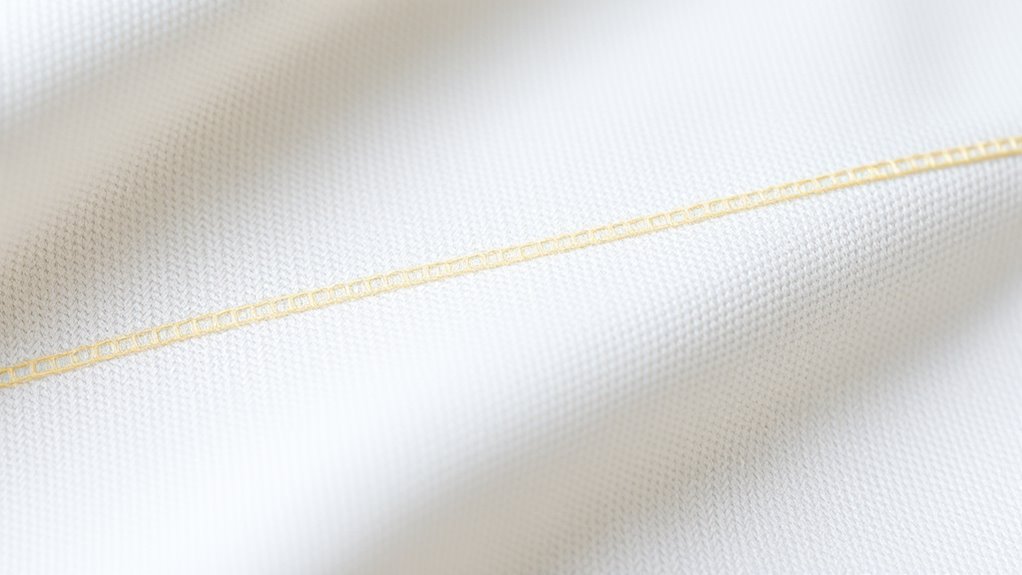
The running stitch is one of the simplest and most versatile basic sewing stitches. It works well on a variety of fabric types, from lightweight cotton to heavier canvas. This stitch creates a straight, even line that’s easy to control, making it perfect for quick repairs or basting fabric pieces together. While it’s not as strong as other stitches, like the backstitch, the running stitch offers decent stitch durability for temporary or decorative purposes. You’ll find it useful for gathering fabric or marking seam lines. Keep your stitches evenly spaced and consistent to ensure a neat appearance. Overall, mastering the running stitch is essential for any beginner, providing a solid foundation for more advanced stitches and sewing techniques. Additionally, understanding sewing tools like needles and thread quality can greatly improve your stitching results.
Backstitch
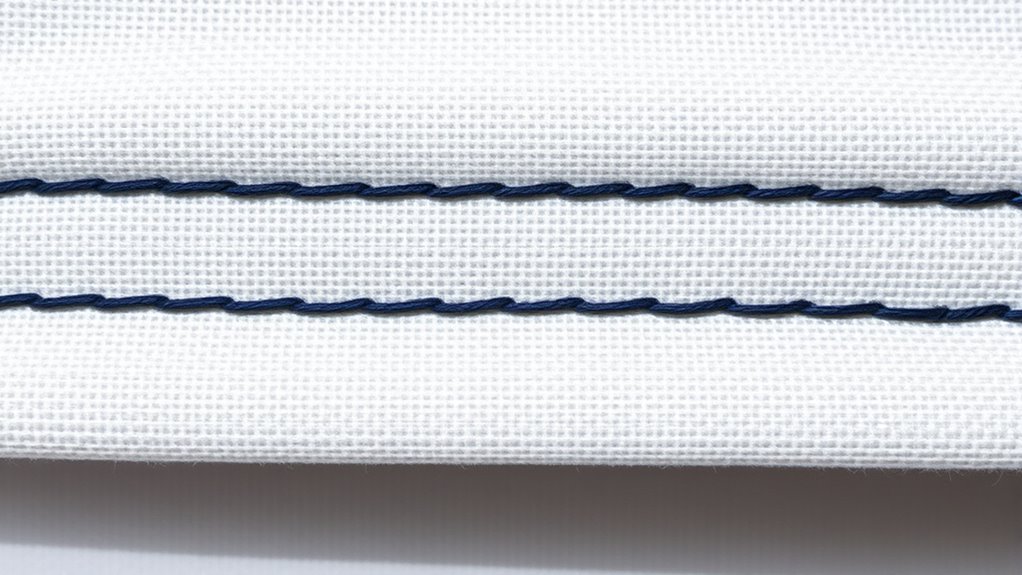
Have you ever needed a strong, secure stitch for your sewing projects? The backstitch is perfect for this. It creates a durable seam that holds up well on various fabric types, from lightweight cotton to heavy denim. Its stitch durability makes it ideal for seams that experience tension or stress. Here’s a quick comparison:
| Fabric Type | Stitch Durability | Best Use |
|---|---|---|
| Cotton | High | Garments, quilting |
| Denim | Very high | Jeans, bags |
| Silk | Moderate | Delicate hems, repairs |
| Linen | High | Home décor, clothing |
Mastering the backstitch guarantees your projects stay strong and last longer, no matter the fabric. Additionally, understanding ethical hacking techniques can help safeguard your projects from cyber threats.
Whipstitch
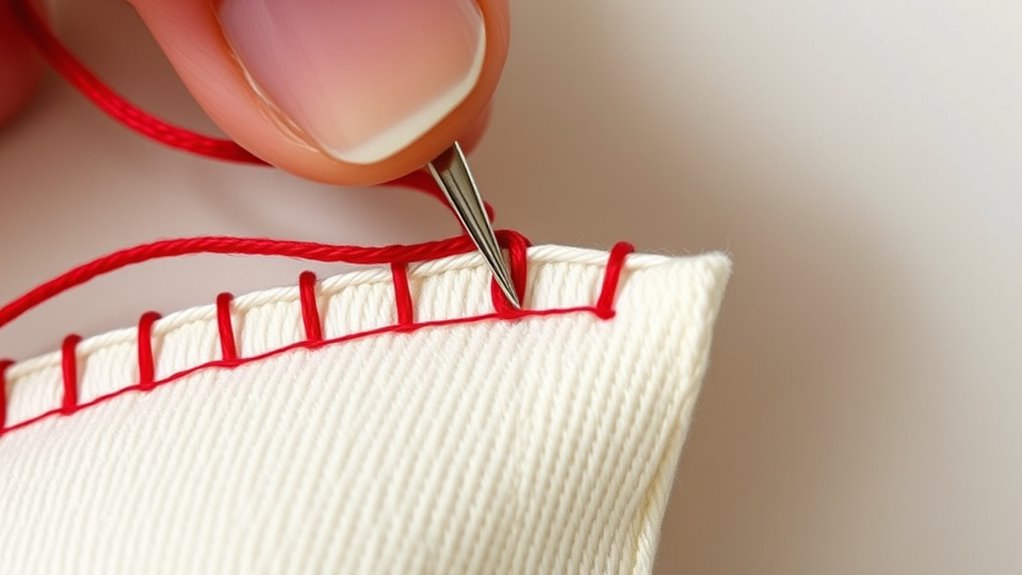
Wondering how to quickly finish raw fabric edges or add decorative details? The whipstitch is your go-to stitch for both purposes. It’s simple to learn and versatile, making it ideal for finishing seams or creating decorative stitches on your projects. To do a whipstitch, pass your needle over the edge of the fabric, then through the fold, looping around the edge with each stitch. This creates a neat, secure edge and can be embellished with colorful thread for decorative effect. Plus, it’s often used in embroidery techniques to add texture or detail. Whether you’re finishing a raw edge or adding a decorative touch, the whipstitch is an essential stitch everyone should master for practical and creative sewing. Understanding self watering plant pots can also inspire you to incorporate functional details into your sewing projects for added durability and style.
Bobbin Stitch
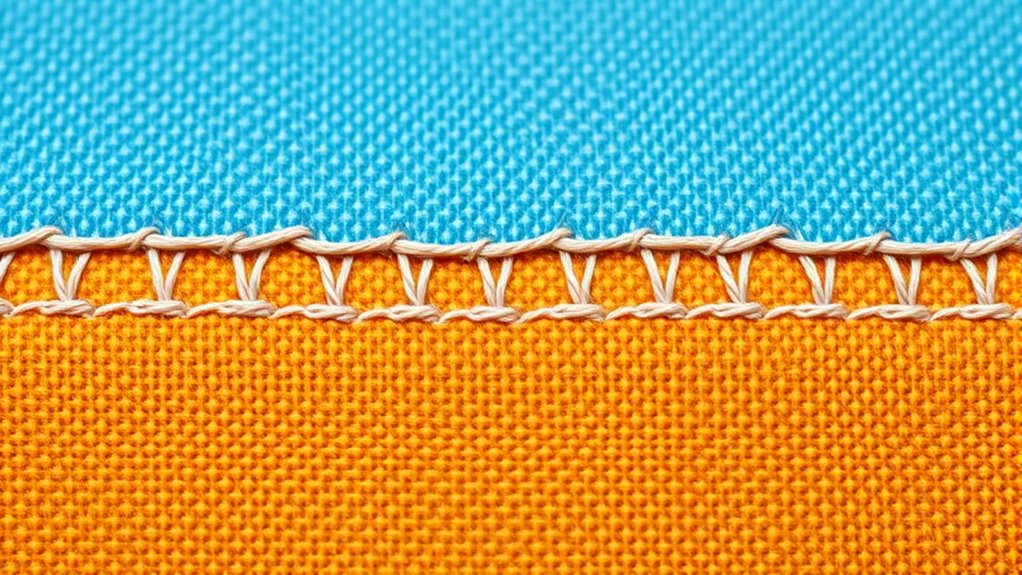
A bobbin stitch is a versatile sewing technique used to create secure, decorative, or functional stitches on your fabric projects. It’s especially useful in machine embroidery, where even stitches matter. To get the best results, you need to pay attention to stitch tension, ensuring the thread from the bobbin and top thread work harmoniously. Proper stitch tension prevents puckering or loose stitches, giving your project a professional finish. You can use a bobbin stitch for appliqué, hem finishes, or decorative accents. Practice adjusting your machine’s tension settings to achieve smooth, even stitches. Once mastered, you’ll find this stitch invaluable for reinforcing seams and adding detail to your sewing projects, making your work both durable and visually appealing. Additionally, understanding the mechanics of thread tension helps maintain sewing machine performance and prolongs the lifespan of your equipment.
Frequently Asked Questions
What Types of Fabrics Are Best Suited for Each Stitch?
You should choose fabrics based on their compatibility with each stitch to guarantee stitch durability. For example, lightweight fabrics like chiffon or silk work well with delicate stitches, while heavy fabrics like denim or canvas need stronger stitches like a backstitch or bartack. Always consider fabric compatibility to prevent puckering or tearing, and select stitches that match your project’s durability needs for long-lasting, professional results.
How Do I Fix Common Mistakes in Each Stitch?
To fix common mistakes in each stitch, start by checking your thread tension and adjusting it for a smooth, even stitch. If your stitches are too tight or loose, tweak the tension dial accordingly. Also, review your stitch length; too long or short stitches can cause issues. Re-sew the problematic section slowly, ensuring your fabric feeds evenly, and make small adjustments until your stitches look neat and consistent.
Can These Stitches Be Used for Decorative Purposes?
Yes, you can definitely use basic stitches for decorative purposes. By exploring embellishment techniques and stitch variations, you add visual interest to your projects. For example, using a zigzag or chain stitch creates unique textures, while decorative hand stitches like embroidery or embellishments can enhance fabric designs. Experimenting with these techniques allows you to transform simple stitches into beautiful accents, making your sewing projects more personalized and artistic.
What Tools Are Essential for Practicing These Stitches?
You might worry about needing fancy tools, but all you really need are a good sewing machine, scissors, and some quality thread for practicing stitches. To keep your stitches perfect, regular sewing machine maintenance is key, and choosing the right thread enhances your results. With these essential tools, you can confidently practice and master basic stitches, making your sewing projects look professional and polished without extra fuss.
How Do I Secure Stitches to Prevent Unraveling?
To secure stitches and prevent unraveling, you should tie a knot at the end of your thread after finishing your seam. Additionally, adjusting your thread tension ensures stitch durability, making your stitches stronger and less likely to come undone. For extra security, you can sew back over the last few stitches or use a small backstitch. Proper tension and secure knots keep your sewing durable and neat.
Conclusion
Mastering these basic stitches gives you the confidence to tackle simple projects and fix clothes effortlessly. Did you know that nearly 70% of people feel more empowered when they learn a new sewing skill? With just a few stitches, you can transform old garments into something new and unique. Keep practicing, and you’ll soon find sewing not just useful, but also relaxing and rewarding. So go ahead—grab your needle and thread, and start stitching your creative ideas today!

